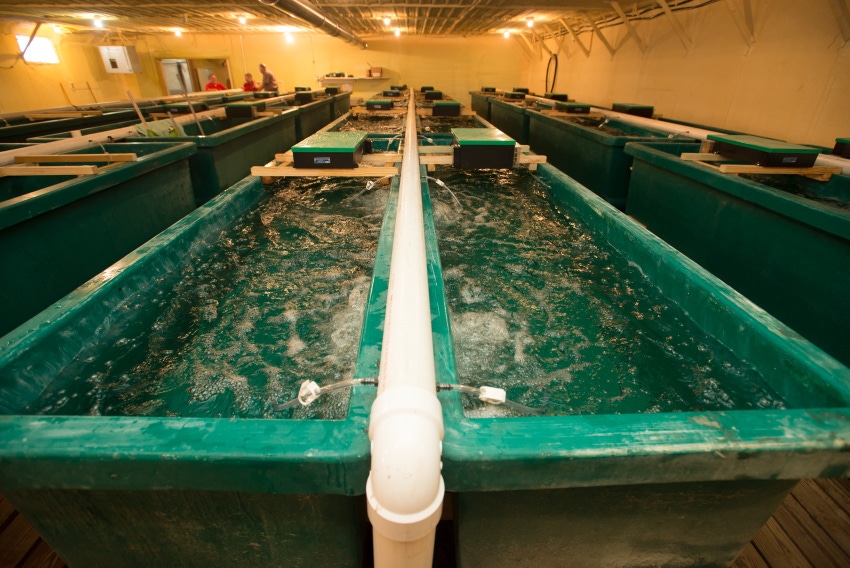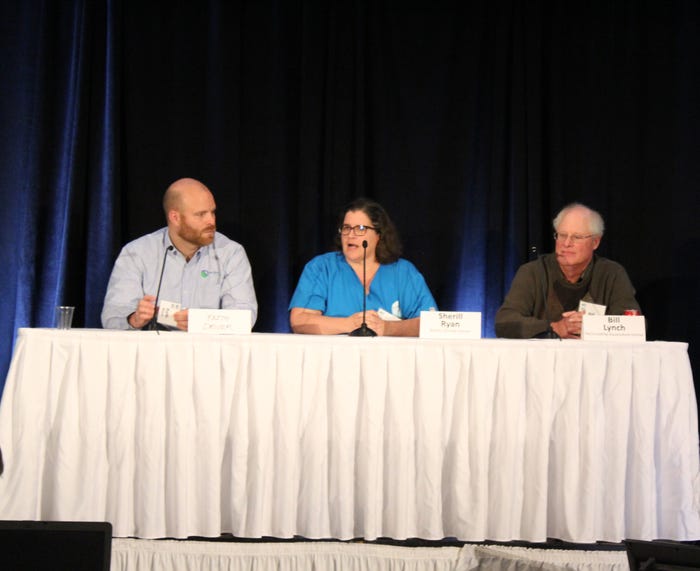December 8, 2016

The emerging aquaculture industry offers big market opportunities for Iowa farmers. According to experts who spoke at the Coalition to Support Iowa’s Farmers (CSIF) recent aquaculture conference, the high quality resources that position Iowa as a top producing ag state also make it a natural fit for aquaculture production.
Many farmers are recognizing this market opportunity. Nearly 200 participants attended the CSIF event to learn about start-up considerations and “deep dive” topics for fish farms already in production.
“Around 90% of the seafood consumed in the U.S. is imported and given its health benefits, there’s a lot of room on the American consumer’s plate for additional seafood,” says Mike Naig, Iowa Deputy Secretary of Agriculture. “We have a tremendous opportunity right here in the heartland to capture and serve that market.”
Tapping into Iowa’s resources
Like other animal agriculture industries, aquaculture in the U.S. is diverse and complex because it encompasses a variety of different species and management systems. But while other sources of protein are largely produced here in the Midwest, aquaculture represents an enormous, untapped economic opportunity.
According to Bridget Owen, executive director of the Soy Aquaculture Alliance, seafood remains the fastest growing food production sector in the world, with just a little under 3% of seafood products being produced in the U.S. “Right now we are missing out on this opportunity, but we do have some great advantages on our side,” says Owen. “We have incredible resources when it comes to fish and shrimp farming.”

CATCHING ON: The emerging aquaculture industry offers opportunities for Iowa agriculture. A panel of farmers currently raising fish and shrimp shared their experiences at a recent meeting in Ames.
One of these resources includes feed ingredients. Iowa and other states throughout the heartland are home to an abundant supply of corn and soybeans, which are essential components of fish feed: an expense that can account for up to 50% of aquaculture production costs. “These are the building blocks for the aquaculture industry,” says Owen. “Having economical, sustainable, high quality resources right in your backyard is critical.”
Other advantages that position Iowa to adopt a thriving aquaculture industry include research expertise, technological innovation and natural resources such as available land and water. These create an ideal environment to produce safe and nutritious seafood for consumers who in the end drive market demand.
Success beyond the seashore
Aquaculture farmer panelists Sherill Ryan, owner of Sherlock Shrimp, and Keith Driver, president of VeroBlue Farms, have already struck success building their customer bases in Iowa.
“It’s important to find people to work with that you can trust are providing you with good information,” says Ryan. “We have cattle and crops and you can always find folks who have good information right in your own community, but that’s not necessarily the case with shrimp farming. Do your homework and go to sources you know are reputable.”
For larger operations like VeroBlue Farms, telling the company story is equally as important as producing high-quality Barramundi. “We’re using online marketing tools, such as social media, quite aggressively to tell the story of land-based aquaculture,” says Driver. “I think the story for aquaculture is just coming into its prime, and these channels allow you to quickly get that message out.”
Aquaculture’s murky waters
While the aquaculture industry presents many exciting new ventures for Iowa farmers, it also has its share of murky waters. Adjusting to a profitable scale is one of the major challenges, as well as consulting with veterinarians who have aquaculture experience and expertise. A third challenge includes navigating the environmental rules and regulations.
“The same rules and regulations that apply to traditional livestock species such as hogs and cattle, also apply to fish farming,” says Brian Waddingham, executive director of the Coalition to Support Iowa’s Farmers. “If you’re considering aquaculture, we can provide you with the assistance you need to determine if fish farming is the right fit for your farm, and to feel confident about your decision to explore this growing industry.”
CSIF is a nonprofit organization that assists livestock farmers who want help interpreting rules and regulations, guidance on good site locations for barns, counsel on enhancing neighbor relations and tips on how to protect the environment at no cost. For more information, call 800-932-2436 or visit supportfarmers.com.
CSIF was created by farmers to help farmers raise livestock responsibly and successfully. It’s a joint partnership involving the Iowa Cattlemen’s Association, Iowa Corn Growers Association, Iowa Egg Council, Iowa Farm Bureau, Iowa Pork Producers, Iowa Soybean Association, Iowa Turkey Federation and Midwest Dairy Association.
About the Author(s)
You May Also Like




